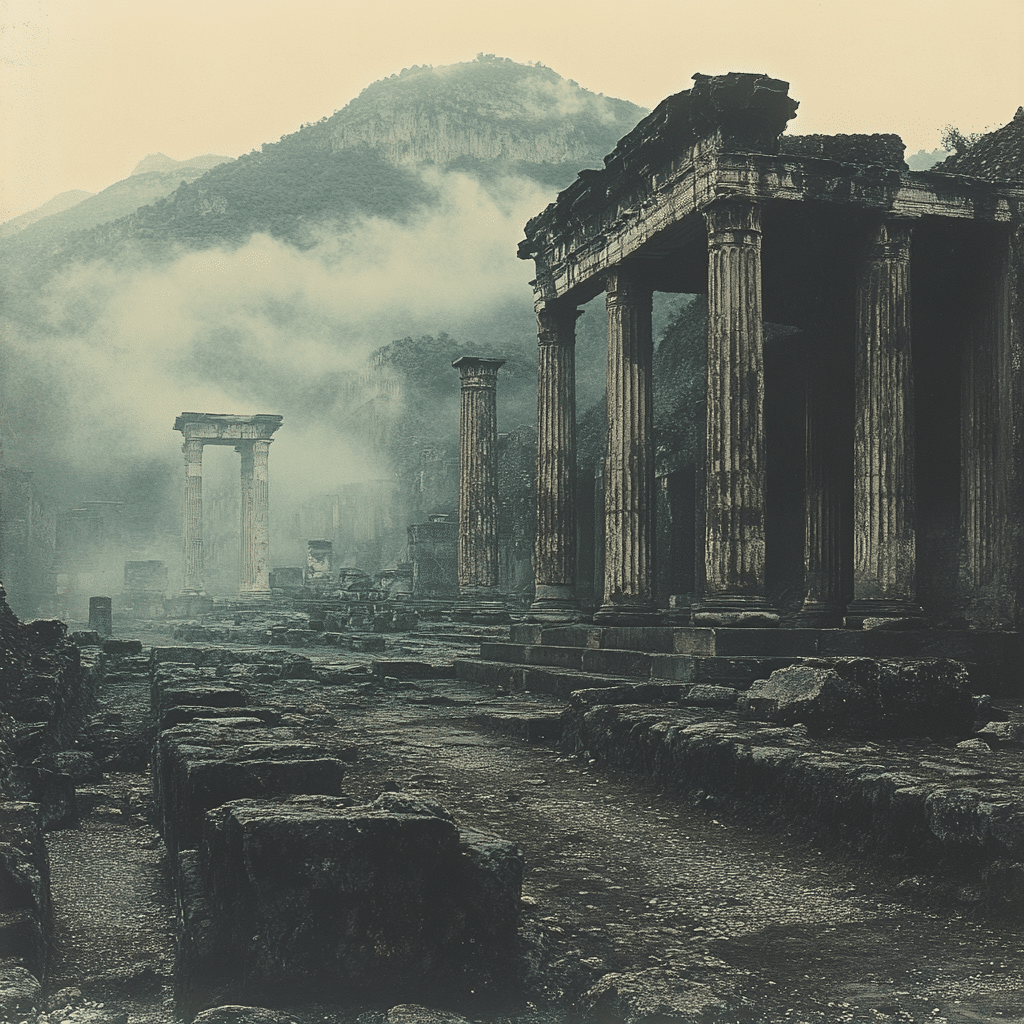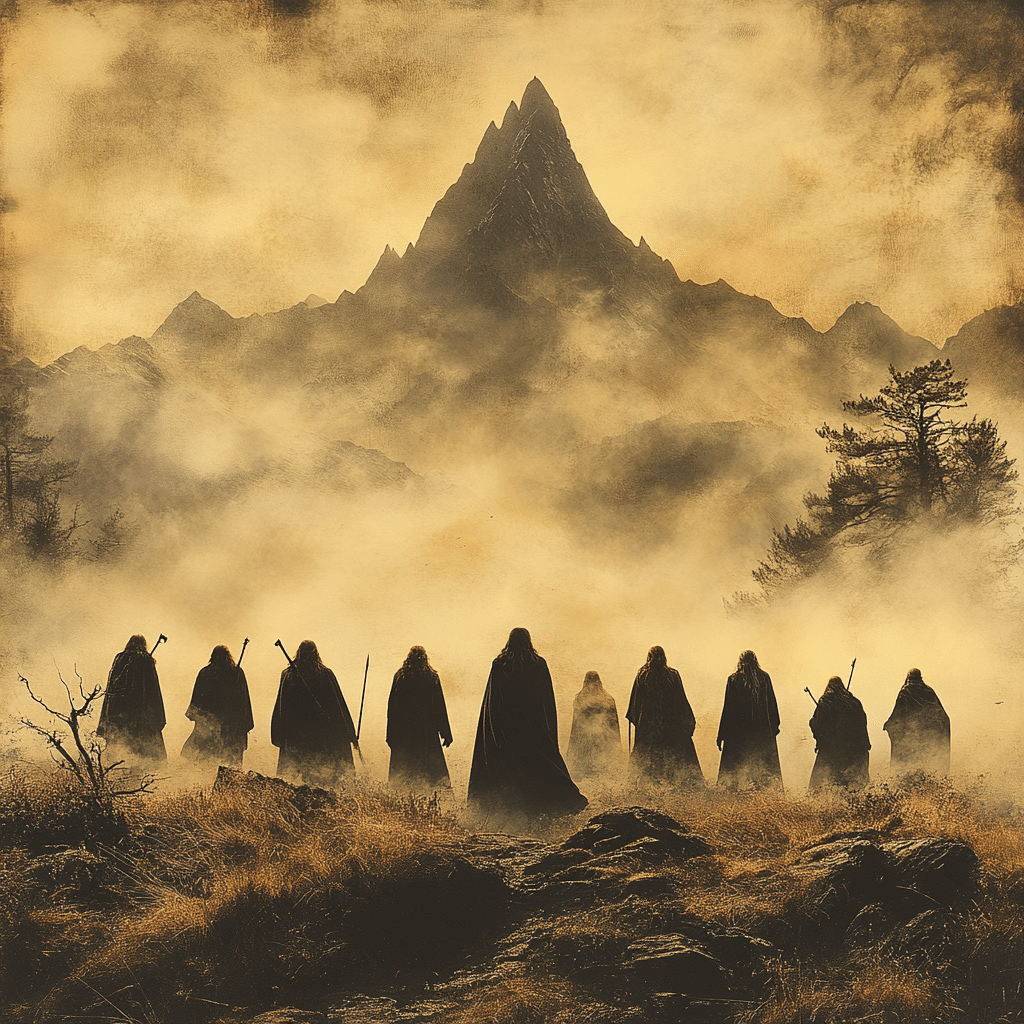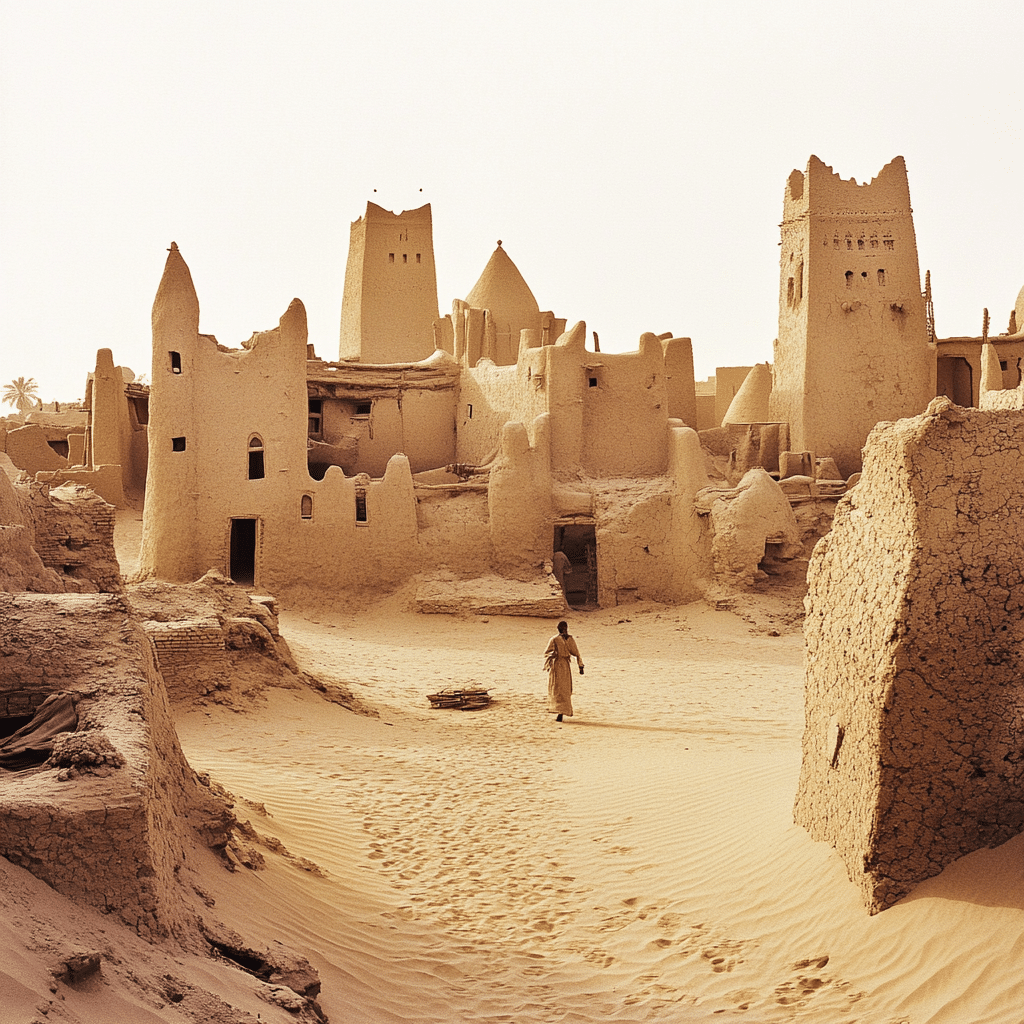The Kalahari Desert, a region that stretches its sandy fingers through Botswana, South Africa, and Namibia, stands as one of Earth’s grandest natural treasures. Its name derived from the Tswana word “Kgala,” meaning “the great thirst,” or “Kgalagadi,” meaning “a waterless place,” the Kalahari has enamored explorers and scientists alike with its vastness and historical depth. A vista that’s seemingly eternal, with rolling red dunes rippling to the horizon, the Kalahari’s semi-arid terrain tells a tale that spans millions of years.

The Enduring Vastness of the Kalahari Desert
The Kalahari Desert is not just a feature of the African terrain; it’s an immense basin that spans approximately 900,000 square kilometers. The desert sprawls across Botswana, parts of Namibia, and the fringes of South Africa. It’s a land of contrasts, with terrains ranging from sandy dunes to hardpan derived from ancient lake beds.
Delving into the geological past, scientists have unearthed that the Kalahari has existed for approximately 60 million years. Its sandy soil isn’t a stranger to change, having been shaped by aeolian – or wind-driven – processes. The iconic red dunes are much more than picturesque; they are records of environmental shifts that predate humans.
The shifting climate of the Kalahari keeps it classified as a semi-arid desert. It experiences severe changes, with scorching heat in the day plummeting to freezing temperatures at night. Moderate rainfall offers a respite, albeit seldom and unpredictable, nurturing a surprising diversity of life forms.

Unveiling the Secrets of Kalahari’s Ancient Peoples
Unearthing the Kalahari’s human history, archaeologists have struck gold at sites like the Tsodilo Hills in Botswana. Here rock shelters and awe-inspiring cave paintings speak of ancient societies, with some sites estimated to be over 70,000 years old. They map the ebb and flow of humankind through the region.
The cultural tapestry of the Kalahari is immensely enriched by the San people, commonly known as Bushmen. Their rock art is not just artistry; it’s a narrative of their intimate relationship with this land. Their knowledge of the desert’s resources is a lifeline that persists despite modern world challenges.
Pairing traditional wisdom with cutting-edge research, anthropologists and ecologists are piecing together the Kalahari’s past. This cooperation is crucial in understanding human history, where the folk stories of the San intersect with carbon-dated artifacts – creating a storied map of ancient human life.
| Category |
Information |
| Location |
Southern Africa (primarily Botswana, parts of Namibia and South Africa) |
| Size |
Approximately 900,000 square kilometers (350,000 square miles) |
| Climate |
Semi-arid, with scarce and unpredictable rainfall averaging 5–10 inches annually |
| Terrain |
Sand dunes, hardpan, and salt pans; limited water sources |
| Flora |
Mainly savannah vegetation with acacia trees, grasses, and herbaceous plants |
| Fauna |
Adapted for arid conditions; includes meerkats, antelopes, lions, cheetahs, and various birds |
| Human Inhabitance |
Home to the San (Bushmen) and other indigenous tribes / communities |
| Conservation Areas |
Central Kalahari Game Reserve, Kgalagadi Transfrontier Park, Khutse Game Reserve |
| Unique Features |
One of the largest continuous stretches of sand in the world; home to the Okavango Delta |
| Cultural Significance |
Rock paintings, engravings, and archaeological sites trace human history over thousands of years |
| Environmental Concerns |
Overgrazing, poaching, habitat loss, and climate change impact |
| Economic Activities |
Subsistence farming, hunting, tourism |
The Flora and Fauna Tapestry of the Kalahari Desert
The kalhari desert is home to a plethora of plant and animal species that exhibit remarkable adaptations. The acacia trees, for example, have deep root systems to tap into scarce water reserves. Black-maned lions, a symbol of the desert’s might, roar beneath an unforgiving sun, their majestic manes setting them apart from their counterparts elsewhere in Africa.
Against the odds, there’s a surprising level of biodiversity here. It’s a world where critters and creatures defy the expectations of a desert ecosystem. From springboks that dance on the horizon to meerkats that stand to attention, each species has a tailored survival strategy.
Conservationists are working hard to safeguard endangered species in the Kalahari such as the elusive African wild dog and the secretive pangolin. These creatures, wrapped in the narrative of the Kalahari, are keystones in the environmental fabric of this place.
Kalahari’s Climate Change Conundrum
Searching beyond the usual, researchers have highlighted concerns as the Kalahari feels the pressing weight of climate change. The once predictable rhythms of weather are now distorted, creating a wave of uncertainty across the desert’s expanse.
From expanding arid zones — a process known as desertification — to the increasing variability in temperature, the impacts of climate change are assertive here. It’s a call to arms, as each fluctuation in the weather can usher in disproportionate consequences for the flora and fauna.
The voices of local leaders and scientists ring out, urging for strategies that rhyme with sustainability. The community’s input is vital, as their lives are woven into the desert’s fabric, and adapting is integral for the Kalahari’s symphony of life to continue.
The Lively Livelihoods Within the Kalahari Desert
Beneath the Kalahari’s vast skies, indigenous groups have thrived for millennia. Their livelihoods, sown into the desert soil, revolve around ancestral practices like hunting and foraging. It’s a time-honored dance with the land that feeds their communities and spirits.
The creeping fingers of modernization have enticed some tribes towards change, offering both promise and peril. Adaptation is a necessity, as much as tradition is a soulful constant. It’s a balancing act, where innovation must respect the cadence of the old ways.
Through persistent resilience, the Kalahari’s inhabitants shape a life in harmony with one of Earth’s toughest environments. It’s a testament to human spirit, ingenuity, and the tenacity to carve happiness from hardships.
Eco-tourism and Conservation: Striking a Balance in the Kalahari
In recent years, eco-tourism has blossomed in the Kalahari, examples such as the Tswalu Kalahari Reserve paint a hopeful picture of nature and commerce coalescing. These initiatives not only provide travelers with an authentic experience but also pump vital funds into conservation.
The boom in eco-tourism has opened new revenue streams for the local economy, providing jobs and enabling community-led conservation projects. It’s a sweet spot, where visitors flock to experience the vastness of the desert while contributing to its preservation.
But the surge of outsiders has ignited a debate. One can’t help but wonder, is eco-tourism a balm or a bane for the Kalahari? Skeptics point out that unchecked, it could trample the very values it intends to uphold, both environmental and cultural.
The Kaleidoscopic Kalahari: Celebrating its Colors and Cultures
As the day wanes, the desert undergoes a miraculous transformation. A kaleidoscope of reds, oranges, and purples dance across the sky, reflected in the sands below. The rare desert bloom – a seasonal event – bedecks the desert in a riot of colors and life.
The Kalahari is not merely a desert; it’s a confluence of cultures. Here, festivities are as vibrant as the setting sun. Through annual festivals, the desert becomes a stage where the myriads who call this place home come together to commemorate their shared heritage.
Introducing initiatives to conserve, these platforms build bridges between natural beauty and cultural heritage, ensuring the long-term survival of both. It’s here that stories from the San, amongst others, are celebrated and safeguarded for posterity.
The Fables and the Future: Storytelling and Legacy in the Kalahari
The Kalahari carries the weight of countless tales, spun before campfires and passed down through generations. These narratives, steeped in the wisdom of the desert, contribute to the enchanting allure of the Kalahari.
Gazing into the horizon, scientists and indigenous leaders craft visions of the future – a symbiosis of progress and preservation. It’s a shared determination to maintain the Kalahari as a living, breathing chronicle of humanity’s footprint on Earth.
Anchoring tradition through education, communities ensure the desert’s stories and survival strategies outlast the flickering fires. In classrooms made of open skies and sandy floors, the legacy of the Kalahari continues to spread its roots deeper into the future.
Our voyage through the Kalahari Desert’s unfolding narrative exposes a rich mosaic of extraordinary environmental feats, profound historical significance, and undying human determination. The desert, with all its enduring majesty, is a place of never-ending learning and adaptation. Whether it’s combating the whims of climate change or preserving ancestral narratives, the Kalahari remains a cradle of life – silent yet speaking volumes, arid yet abundant. Bearing witness to this earthly wonder, we at Loaded Dice Films not only trace the footprints left behind but also look ahead to the tracks we have yet to make. The Kalahari, with every whispering dune, serves as a mentor in the art of resilience and the craft of coexistence.
Uncovering the Secrets of the Kalahari Desert
The Kalahari Desert, known for its vast expanse of reddish sand, holds more surprises than one might imagine. You see, if the desert were a movie, its diverse flora and fauna would snag the best supporting actors award, hands down. For instance, don’t let the arid landscape fool you; this place is home to the peculiar rock shrimp, which—you guessed it—is as tough and intriguing as its namesake implies. But hold your horses; before you think about packing your bags to embark on a quest to become Jason Bourne in the midst of the Kalahari, you might want to consider the grueling survival skills you’d need to master.
Speckled across this intriguing landscape, you’d find more than just a sprinkle of resilient plant life. Imagine stumbling upon an odd yet fascinating tree that produces the Marañon, also known as the cashew apple. Talk about a desert treasure! And who would’ve thought that amid all this sand, you could find traces of a soft serve ice cream machine in the form of the desert’s gentle undulations and cool nights? Well, not literally—but picture the desert’s dunes as swirls of delicious, frozen confectionery, offering a glimpse into nature’s playful side.
A Kaleidoscope of Desert Wonders
Now, hold your camels! This isn’t just a dry tale. The Kalahari whispers the untold stories of centuries past. As you weave through the tapestry of time, bedding down in the desert might not be as luxurious as wrapping yourself in fine bed threads, but the stark, star-filled skies offer a different kind of five-star experience. Transitioning from fauna to folks, did you know that the desert has been a movie star in its own right? While Datari Turner might craft cinematic masterpieces, the Kalahari has played its part on the natural stage, setting the scene for countless documentaries and nature-inspired narratives.
Let’s switch gears for a second—because the Kalahari is no one-trick pony. Every now and then, researchers unravel fascinating findings, causing a buzz that would have internet servers flashing Chatgpt too many Requests. Yet, it’s not just digital chatbots that get overwhelmed—imagine the possibilities lurking beneath the sands, from evidence of ancient human settlements to tales of survival and adaptation that would give any seasoned analyst a run for their money when it comes to seller Concessions on the housing market! The desert’s economy is one of survival, and the creatures and cultures that thrive here know a thing or two about striking a bargain with nature.
In sum, this desert is as multifaceted as they come—a vast area where secrets and surprises seem as endless as the sands themselves. So, the next time you think of a desert, remember the Kalahari: a living, breathing testament to the resilience and wondrous oddities of our natural world.


























